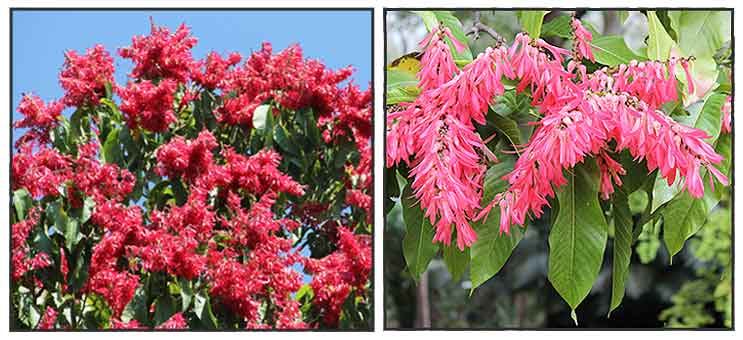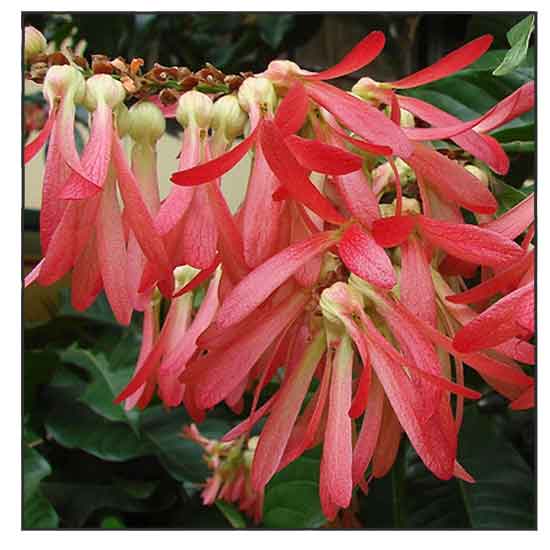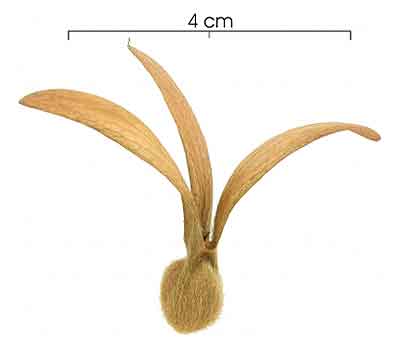
Family • Polygonaceae
Palo-santo
Triplaris cumingiana Fisch. & C.A.Mey.
ANT TREE / MULATO TREE
| Scientific names | Common names |
| Triplaris arnottiana Meisn. | Palosanto (Tag.) |
| Triplaris auriculata Meisn. | Ant tree (Engl.) |
| Triplaris cumingiana Fisch. & C.A.Mey. | Antwood (Engl.) |
| Triplaris guayaquilensis Wedd. | Mulato tree (Engl.) |
| Triplaris lindeniana Wedd. | Long john tree (Engl.) |
| Long jack (Engl.) | |
| Palo santo as common name is shared by Triplaris cumingiana and Busera graveolens. | |
| Triplaris cumingiana is an accepted species. KEW: Plants of the World Online | |
| Other vernacular names |
| ECUADOR : Fernan Sanchez, Muchina. |
| PANAMA: Guayabon, Guayabo hormiguero, Palo santo. |
Constituents Properties Availability |
September 2025
![]()
 |
| Â Â Â Â Â Â Â Â Â Â Â Â Â Â Â Â Â Â Â Â Â Â Â Â Â PHOTOS / ILLUSTRATIONS |
| IMAGE SOURCE: Triplaris cumingiana - Ant tree samarangense / © etsy / Non-commericla use / Image modified / Click on image or link to go to source page / etsy |
| OTHER IMAGE SOURCE: Triplaris cumingiana / Treeworld Wholesale / CC BY 2.0 Generic / Image modified / Click on image or link to go to source page / Wikimedia Commons |
| OTHER IMAGE SOURCE: Triplaris cumingiana: Seeds developing on a tree / © Rictor Norton / CC BY 4.0 International Deed / Image modified / Click on image or link to go to source page / Useful Tropical Plants |
| OTHER IMAGE SOURCE: Triplaris cumingiana fruit / STRI's Environmental Science Program / Non-commercial use / BY 2.0 Generic / Image modified / Click on image or link to go to source page / Smithsonian Tropical Research Institute |
Additional
Sources and Suggested Readings |
• |
DOI: It is not uncommon for links on studies/sources to change. Copying and pasting the information on the search window or using the DOI (if available) will often redirect to the new link page. (Citing and Using a (DOI) Digital Object Identifier) |
| Â Â Â Â Â Â Â Â Â Â Â Â Â Â Â Â Â Â Â Â Â Â Â Â Â Â Â Â Â Â List of Understudied Philippine Medicinal Plants |
| Â Â Â Â Â Â Â Â Â Â Â Â Â Â Â Â Â Â Â Â Â New plant names needed The compilation now numbers over 1,730 medicinal plants. While I believe there are hundreds more that can be added to the collection, they are becoming more difficult to find. If you have a plant to suggest for inclusion, native or introduced, please email the info: scientific name (most helpful), local plant name (if known), any known folkloric medicinal use, and, if possible, a photo. Your help will be greatly appreciated. |
• |
 |



 Uses
Uses